Navigation
Install the app
How to install the app on iOS
Follow along with the video below to see how to install our site as a web app on your home screen.

Note: This feature currently requires accessing the site using the built-in Safari browser.
More options
You are using an out of date browser. It may not display this or other websites correctly.
You should upgrade or use an alternative browser.
You should upgrade or use an alternative browser.
Confused on which filters I should be buying...
- Thread starter anubis404
- Start date
AlexColeman
TPF Noob!
- Joined
- Dec 13, 2008
- Messages
- 1,732
- Reaction score
- 1
- Can others edit my Photos
- Photos OK to edit
A lighter wallet.
No, actually it is just a little bit quality, warranty, threading.
No, actually it is just a little bit quality, warranty, threading.
AlexColeman
TPF Noob!
- Joined
- Dec 13, 2008
- Messages
- 1,732
- Reaction score
- 1
- Can others edit my Photos
- Photos OK to edit
No, you might want to look for a good multi-coated CPL. Might be more around 50, but you will stop flare.
dtornabene1
TPF Noob!
- Joined
- Dec 8, 2008
- Messages
- 320
- Reaction score
- 0
- Location
- Chicago, IL
- Website
- www.nticoncepts.com
- Can others edit my Photos
- Photos OK to edit
Don't think flare as in reflections created by the sun bouncing around inside your lens. Think of flare as in the coatings on the filter, rather lack of coatings, changing light patterns.
Basically, ask yourself why are more expensive lenses equipped with more glass and special elements that deal with chromatic aberrations? The answer is quite simple. All colors in the visible spectrum have different wavelengths. So, they each diffract at different places in the lens. These elements correct this problem. Better filters do not change the diffraction of the light.
Now, you have a great lens ready to deal with it, but you use a cheap filter. You diffract the light and mess with the physics of the optics. You can use a $2,000 lens with a $25 filter, but why? You are adding an additional glass element to your lens when adding a filter. This is regardless of the lens used.
So, Hoya is a great example. They have come out with a new HD line (High-Durability). This filters are multicoated and designed to give you the best possible element in front of your lens. Also, more expensive filters tend to be thinner. This prevents a possible vignette on your photograph.
The best filters on the market are Heliopan and B + W, bar none. These are by which all others are compared. Does this mean you need to spend $250 per filter (which is what these cost)? No!
Hoya has recently, as stated above, come out with their HD line of filters. Fantastic filters around $125. Still high, but half the price of the best without half the performance. And even though Hoya's own Website lists their new line of High Definition filters, the HD does really stand for High-Durability.
Most important functions of a filter. They let the most light through and reflect too much light. So, get multi-coated regardless of manufacturer. Their build quality. Brass is best. Lastly, they are thin.
If you can get all of these, or just the ones you care about for $50, great! There is some name-brand mark-up in filters. This is everywhere you look. You are paying for a name. But ask yourself, "How are they able to command extra money just for their name?"; they have built superior products over many years.
Hope this helps.
-Nick
Basically, ask yourself why are more expensive lenses equipped with more glass and special elements that deal with chromatic aberrations? The answer is quite simple. All colors in the visible spectrum have different wavelengths. So, they each diffract at different places in the lens. These elements correct this problem. Better filters do not change the diffraction of the light.
Now, you have a great lens ready to deal with it, but you use a cheap filter. You diffract the light and mess with the physics of the optics. You can use a $2,000 lens with a $25 filter, but why? You are adding an additional glass element to your lens when adding a filter. This is regardless of the lens used.
So, Hoya is a great example. They have come out with a new HD line (High-Durability). This filters are multicoated and designed to give you the best possible element in front of your lens. Also, more expensive filters tend to be thinner. This prevents a possible vignette on your photograph.
The best filters on the market are Heliopan and B + W, bar none. These are by which all others are compared. Does this mean you need to spend $250 per filter (which is what these cost)? No!
Hoya has recently, as stated above, come out with their HD line of filters. Fantastic filters around $125. Still high, but half the price of the best without half the performance. And even though Hoya's own Website lists their new line of High Definition filters, the HD does really stand for High-Durability.
Most important functions of a filter. They let the most light through and reflect too much light. So, get multi-coated regardless of manufacturer. Their build quality. Brass is best. Lastly, they are thin.
If you can get all of these, or just the ones you care about for $50, great! There is some name-brand mark-up in filters. This is everywhere you look. You are paying for a name. But ask yourself, "How are they able to command extra money just for their name?"; they have built superior products over many years.
Hope this helps.
-Nick
anubis404
TPF Noob!
- Joined
- Apr 5, 2008
- Messages
- 955
- Reaction score
- 0
- Can others edit my Photos
- Photos OK to edit
I settled on an inexpensive Sunpack as a CPL. I am currently saving all I have for either a good wide angle or a good telephoto, and I don't think I can afford to spend over $50 on a filter. I will only be using this filter for landscape or outdoor shooting. When shooting portraits or other, I shoot filter free.
I can always upgrade the filter later, and if I get a wide angle, most of my money will be put into a good CPL for that. All I really need is something to darken the skies on outdoor shots. I assume the quality loss with a cheap filter is fairly unnoticeable?
I can always upgrade the filter later, and if I get a wide angle, most of my money will be put into a good CPL for that. All I really need is something to darken the skies on outdoor shots. I assume the quality loss with a cheap filter is fairly unnoticeable?
AlexColeman
TPF Noob!
- Joined
- Dec 13, 2008
- Messages
- 1,732
- Reaction score
- 1
- Can others edit my Photos
- Photos OK to edit
This won't darken the skies, it increases saturation, for what you want it to do, you would need a Grad ND.
dtornabene1
TPF Noob!
- Joined
- Dec 8, 2008
- Messages
- 320
- Reaction score
- 0
- Location
- Chicago, IL
- Website
- www.nticoncepts.com
- Can others edit my Photos
- Photos OK to edit
I assume the quality loss with a cheap filter is fairly unnoticeable?
Don't assume. This is all dependant on how important the photograph is to you. If it a photograph at a friends BBQ, it doesn't really matter. When I shoot my fiancée, I use the best camera, the best glass, and the best filter. Why? Because it is of these photographs I am most particular and critical.
This won't darken the skies, it increases saturation, for what you want it to do, you would need a Grad ND.
Not to jump on Alex's bandwagon, but he is right on the money. A CPL can stop down a shot, but this is an interesting side effect. Its main purpose is to only allow light to enter at a certain angle. This is why you can see through water by removing reflections. The light reflected is at a different angle and the CPL removes it. Leaving behind the water and what is beneath.
You need a ND filter. More specifically I would suggest a graduated ND filter. This allows for the bright sky's tonality to be reduce without compromising the subjects tonality.
-Nick
Michael P. Harker
TPF Noob!
- Joined
- Dec 17, 2008
- Messages
- 35
- Reaction score
- 0
- Location
- Cedar Rapids, IA
- Website
- www.harkerphotography.com
- Can others edit my Photos
- Photos NOT OK to edit
The only filter you really need on any of your lenses is a UV filter, which absorbs the ultraviolet wavelength and greatly improves overall color saturation, but is mainly used to protect your lens. Cracking a $15 filter is a lot easier to replace than a front element. Tiffen makes excellent filters at a fair price.
If you want great color saturation in the sky of your outdoor images, there is a simple law of physics to use that doesn't require a filter at all. Let me try to explain this.
First, walk out into a field or a large parking lot with the sun to your left. Look at how much blue saturation is in the sky and begin to turn slowly in a 360 degree circle, all the while observing the changes in the blue hue. Keep your view just above the horizon for this first cirrcle. What you will discover is that when you point your camera 90 degrees from the direction of the sunlight you get your deepest color saturation in the sky.
This is because the atmosphere itsself acts like a lens - as the sun's light passes through the atmosphere it penetrates most directly straight through - if it is noon, the light comes from the south and travels north. When you stand with your back to the sun you will observe the sky in front of you is the lightest, while directly to your left OR right it is at a much deeper blue. This is that 90 degree differential.
Now try the same test only this time raise your vision so you are looking 90 degree up from the horizon. You should notice that the upper most dome of the atmosphere is always a dark blue.
By controlling your angle of view with the sun and how much upper tilt you have in the lens axis, then you have complete control of color saturation in the sky "without the use of a filter". This principal applies at any time of the year - the flexibility in achieving your results is afffected by the seasons. In summer, the sun travels across the northern hemisphere at a much higher inclination and in the winter it is much lower to the southern horizon. Actually, you can achieve your deepest blue saturation in winter, as more of the atmosphere is less affected by the scattering of the light.
The same principal also works when you shoot in black and white (except, of course, the sky changes to a darker or lighter gray)
I hope this helps you!
Michael P. Harker
If you want great color saturation in the sky of your outdoor images, there is a simple law of physics to use that doesn't require a filter at all. Let me try to explain this.
First, walk out into a field or a large parking lot with the sun to your left. Look at how much blue saturation is in the sky and begin to turn slowly in a 360 degree circle, all the while observing the changes in the blue hue. Keep your view just above the horizon for this first cirrcle. What you will discover is that when you point your camera 90 degrees from the direction of the sunlight you get your deepest color saturation in the sky.
This is because the atmosphere itsself acts like a lens - as the sun's light passes through the atmosphere it penetrates most directly straight through - if it is noon, the light comes from the south and travels north. When you stand with your back to the sun you will observe the sky in front of you is the lightest, while directly to your left OR right it is at a much deeper blue. This is that 90 degree differential.
Now try the same test only this time raise your vision so you are looking 90 degree up from the horizon. You should notice that the upper most dome of the atmosphere is always a dark blue.
By controlling your angle of view with the sun and how much upper tilt you have in the lens axis, then you have complete control of color saturation in the sky "without the use of a filter". This principal applies at any time of the year - the flexibility in achieving your results is afffected by the seasons. In summer, the sun travels across the northern hemisphere at a much higher inclination and in the winter it is much lower to the southern horizon. Actually, you can achieve your deepest blue saturation in winter, as more of the atmosphere is less affected by the scattering of the light.
The same principal also works when you shoot in black and white (except, of course, the sky changes to a darker or lighter gray)
I hope this helps you!
Michael P. Harker
dtornabene1
TPF Noob!
- Joined
- Dec 8, 2008
- Messages
- 320
- Reaction score
- 0
- Location
- Chicago, IL
- Website
- www.nticoncepts.com
- Can others edit my Photos
- Photos OK to edit
The only filter you really need on any of your lenses is a UV filter...
Michael,
While I did not post this thread, first I would like to thank you for replying. However, this is a bold statement and not really accurate. Remember, we don't always have the luxury of choosing which direction in which we are going to shoot.
Also, ND, CPL, and many other filters are here for a reason. Yes, every lens should have a filter on it at all times, even if that filter is a UV filter. But, there are great photographic reasons for filters.
-Nick
kundalini
Been spending a lot of time on here!
- Joined
- Jul 18, 2007
- Messages
- 13,607
- Reaction score
- 1,937
- Location
- State of Confusion
- Can others edit my Photos
- Photos NOT OK to edit
Sorry, but I disagree. The only time I will ever use a UV filter for "protection" is if I were at an event that is likely to be throwing mud, dirt or debris in my direction. Protection's best friend is the lens hood..... along with common sense.The only filter you really need on any of your lenses is a UV filter,
If you want to increase saturation and contrast, use a CPL. If you want to keep from blowing out the sky and still retain shadow detail, use a Grad ND, if you want to use slower shutter speeds to attain the silky look of moving water, use an ND filter. IMO, those are the only three filters a digital photographer "needs". The UV for protection theory is a myth, in general.
I've got $K's worth of lenses. That money wasn't spent to have an inadequate piece of optic material to be placed in front of it. If perchance debris were to strike my front element full on, the UV filter is likely to create more damage than prevent. Glass on glass is nasty.
And another note to those considering filters............ the money you spend for a top-shelf filter is worth it, in the end.
- Joined
- Jul 8, 2005
- Messages
- 45,747
- Reaction score
- 14,806
- Location
- Victoria, BC
- Website
- www.johnsphotography.ca
- Can others edit my Photos
- Photos OK to edit
Okay, first off, if you can't afford to spend more than $50 on a filter, than don't buy one. Cheap filters are worse than no filters at all. If you are getting a new 72mm CPOL for less than $100, I would consider that suspect. There are really only a couple of brands: Tiffen and Hoya are the budget end of the decent quality scale. If/when you have a little more money, than look to B+W/Schneider, Rodenstock, and Heliopan.
If you absolutely insist that you need glass on the end of your lens as protection, than get a clear element from B+W; this will still run you in the neighbourhood of $100, BUT it will have no detectable impact on your images.
Nowhere is the saying "You get what you pay for" more true than in photography, and in the area of opical elements, filters or lenses, it's truest of all.
If you absolutely insist that you need glass on the end of your lens as protection, than get a clear element from B+W; this will still run you in the neighbourhood of $100, BUT it will have no detectable impact on your images.
Nowhere is the saying "You get what you pay for" more true than in photography, and in the area of opical elements, filters or lenses, it's truest of all.
kundalini
Been spending a lot of time on here!
- Joined
- Jul 18, 2007
- Messages
- 13,607
- Reaction score
- 1,937
- Location
- State of Confusion
- Can others edit my Photos
- Photos NOT OK to edit
^^ even better. 
(kinda like tripods isn't it?.....)

(kinda like tripods isn't it?.....)
- Joined
- Jul 8, 2005
- Messages
- 45,747
- Reaction score
- 14,806
- Location
- Victoria, BC
- Website
- www.johnsphotography.ca
- Can others edit my Photos
- Photos OK to edit
^^ even better.
(kinda like tripods isn't it?.....)
Seems to me we've done this before haven't we?

Most reactions
-
 432
432 -
 282
282 -
 276
276 -
 262
262 -
 215
215 -
 183
183 -
 176
176 -
 171
171 -
 169
169 -
 167
167 -
 159
159 -
 128
128 -
 116
116 -
I
99
-
 94
94
Similar threads
- Replies
- 3
- Views
- 129
- Replies
- 3
- Views
- 2K



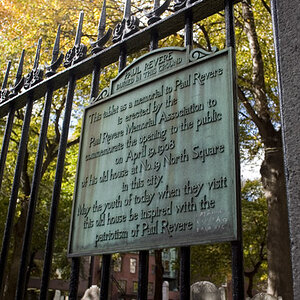
![[No title]](/data/xfmg/thumbnail/37/37620-c3155da657d8b81637b9050d879694f5.jpg?1619738152)
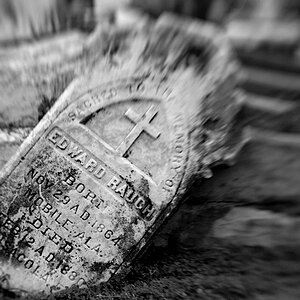
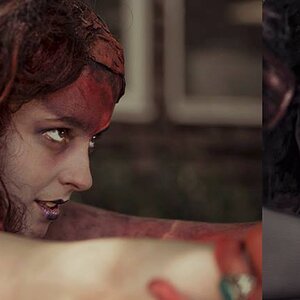
![[No title]](/data/xfmg/thumbnail/32/32175-dfc7c053c145a53c7f2585ca44f122d4.jpg?1619735235)
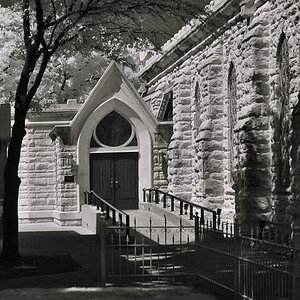
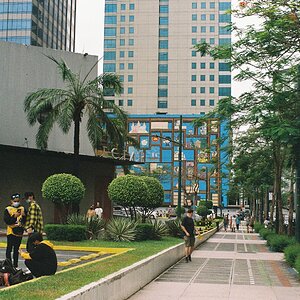

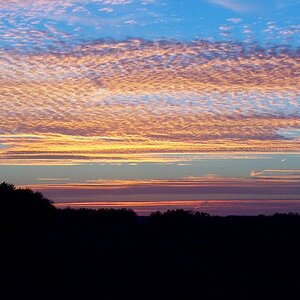
![[No title]](/data/xfmg/thumbnail/32/32929-22e23acc63d6ecb25e5ee941be87121f.jpg?1619735758)